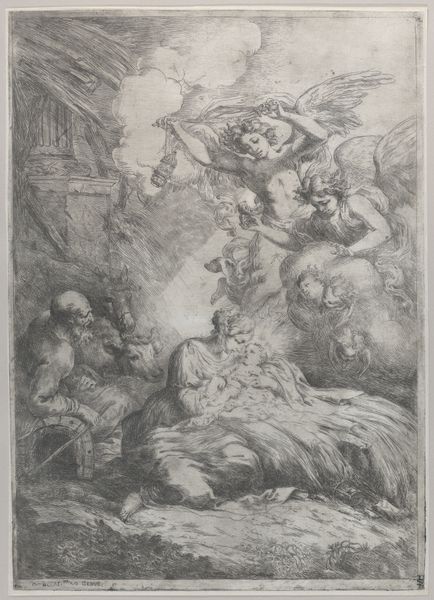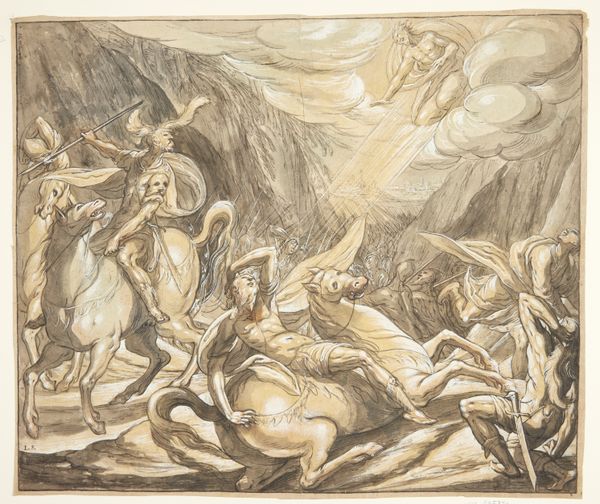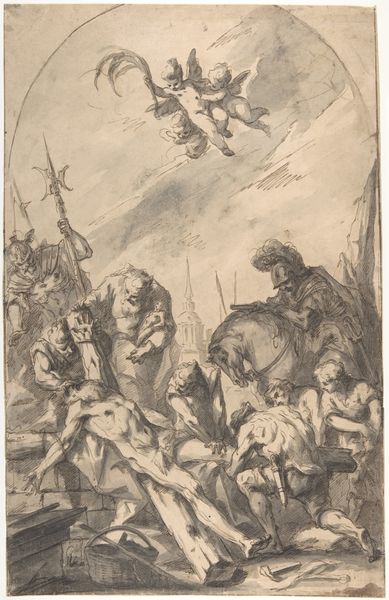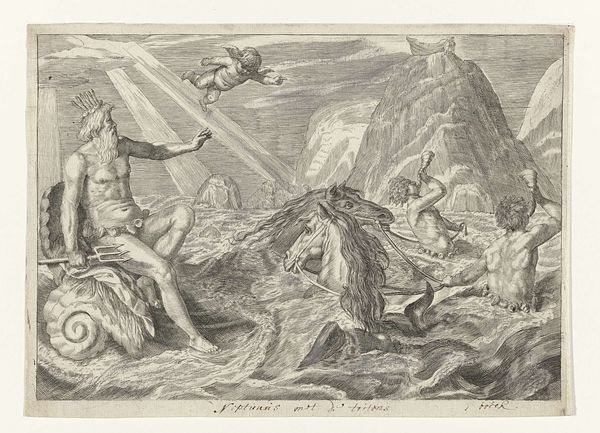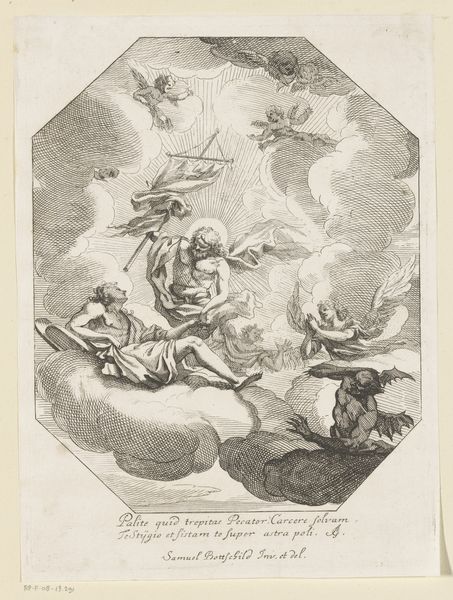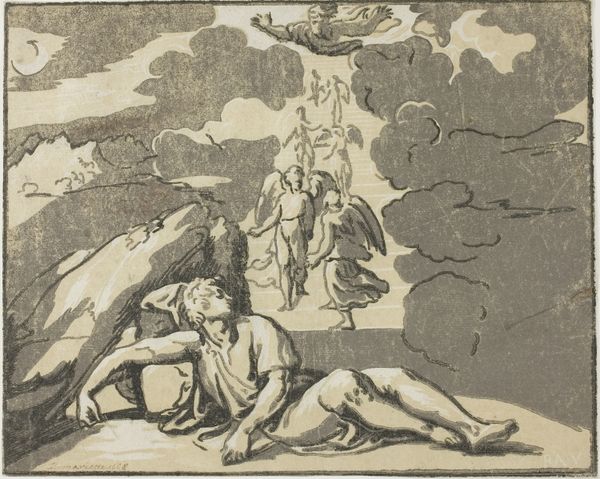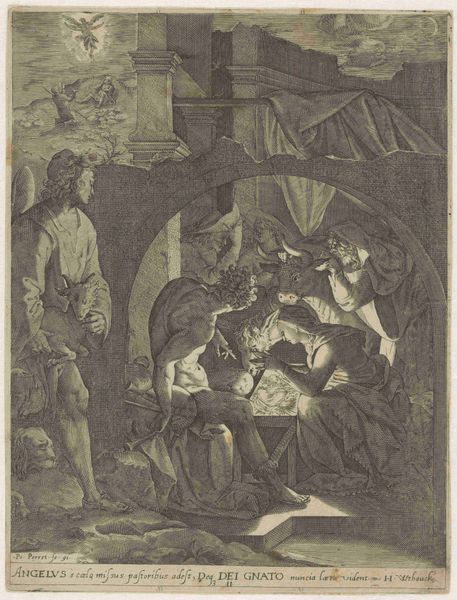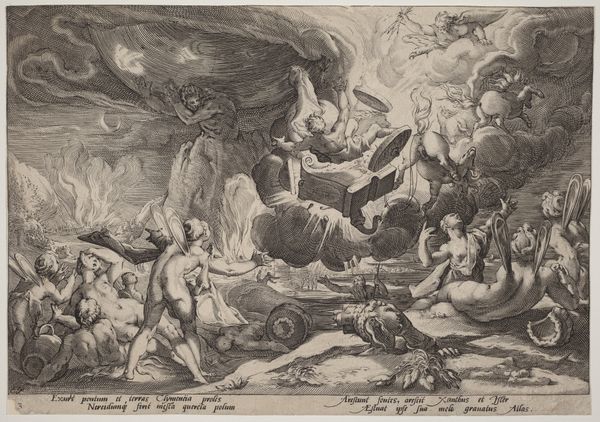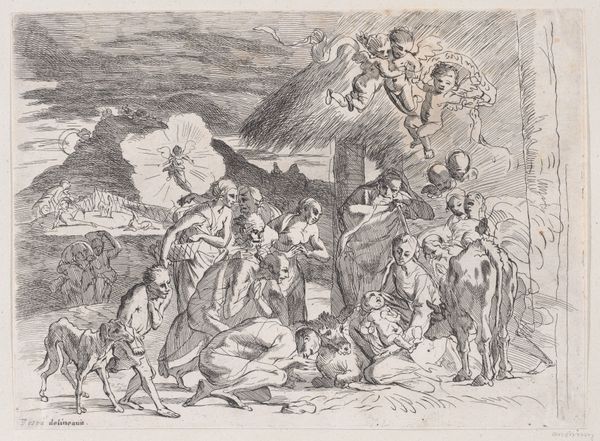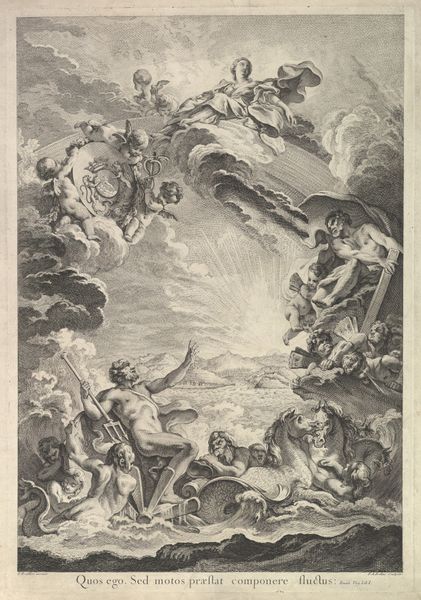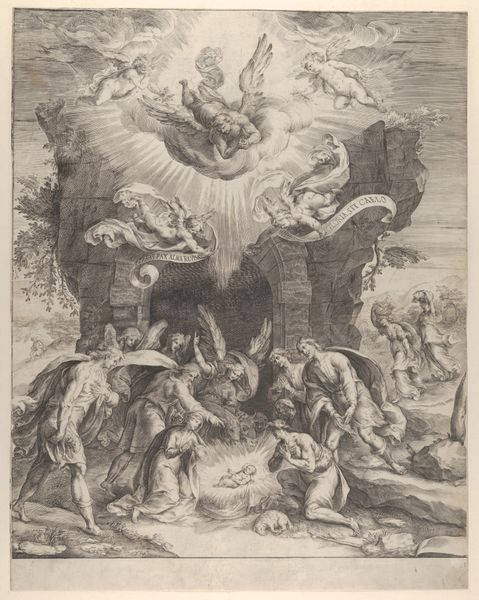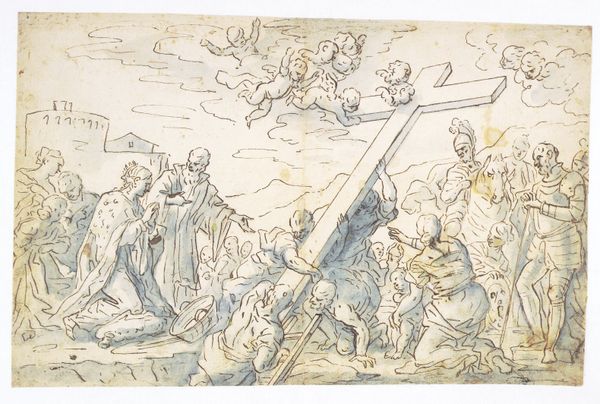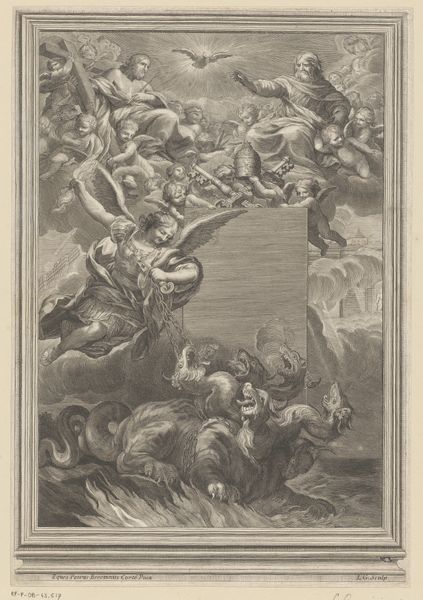
drawing, tempera, ink
#
drawing
#
allegory
#
tempera
#
mannerism
#
figuration
#
ink
#
history-painting
Dimensions: 319 mm (height) x 376 mm (width) (bladmaal)
Curator: Here we have "Engel med draget sværd" which translates to "Angel with a Drawn Sword", created sometime between 1596 and 1630 by Hermann Weyer. The piece employs ink and tempera in a mannerist style on drawing. Editor: It’s bleak, isn’t it? A descending angel against what looks like a plague-ridden landscape. I feel overwhelmed just looking at this mass of bodies. Curator: Indeed. Weyer worked in a period rife with religious and political turmoil. You see similar anxieties reflected across artistic production in Northern Europe. Consider the role imagery played during the Reformation... this wasn't merely artistic expression; it was a battleground for ideas. Editor: That angel, though… it’s more than just a religious symbol, isn’t it? That upraised sword speaks to cultural memory—vengeance, judgment, perhaps even a call to action. It reminds me of classical depictions of Nemesis or even some Valkyrie imagery. There is something so much larger than simply Christian theology implied by this figure. Curator: Precisely! Angels as harbingers of doom, of divine retribution, became prominent visual motifs, often fueled by societal anxieties about morality and theodicy—the justification of God in the face of evil. The Black Death casts a long shadow. Editor: And that contrast – the radiant angel against the muted horror on earth? It heightens the psychological impact. People recoiling from it or lying dead… Weyer captures raw human vulnerability facing an overwhelming force. Curator: That dynamic speaks directly to the intended function of this work. Mannerism as a style prioritized emotional impact, visual drama, and intellectual engagement, all for persuasive means. Whether Weyer was hoping to caution viewers or inspire reform or repentance isn’t something we will know for sure but there are theories and social settings to discuss it for centuries. Editor: Absolutely. Even separated from its original intent, its power lies in the universality of those themes – divine judgment, human suffering, hope or fear in the face of the unknown. Curator: A compelling point that resonates through time, making Weyer’s vision eternally relevant, isn't it?
Comments
No comments
Be the first to comment and join the conversation on the ultimate creative platform.
